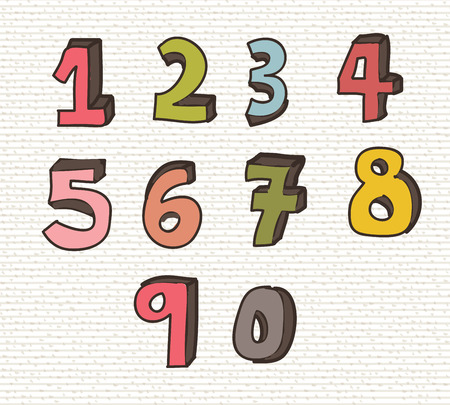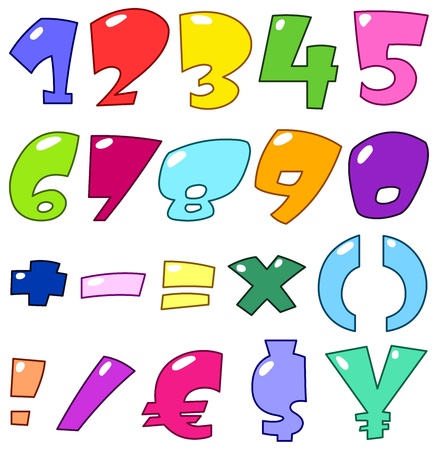1. Understanding Kundli: The Foundation of Vedic Astrology
In the rich tradition of Indian astrology, the Kundli or birth chart stands as a foundational tool for understanding one’s destiny and life path. A Kundli is essentially an astrological chart that maps the positions of planets and constellations at the exact time and place of an individual’s birth. In India, this chart holds immense cultural and spiritual significance, forming a key part of many life decisions—from marriage to career choices, and even health remedies. The practice of preparing and analysing a Kundli is rooted in Vedic astrology (Jyotish Shastra), which has been passed down through generations as a revered science. For millions across India, consulting a learned astrologer to interpret the Kundli is considered essential before embarking on important ventures or addressing personal challenges. When it comes to choosing your main gemstone, Kundli analysis becomes central, as it reveals planetary strengths, weaknesses, and afflictions unique to each person. By understanding your individual planetary alignment through your Kundli, you can select the most auspicious gemstone that harmonises cosmic energies, aligns with your destiny, and helps mitigate negative influences.
2. The Role of Gemstones in Indian Astrology
In the rich tapestry of Indian astrology, gemstones hold a unique and respected position as remedial tools for balancing planetary influences. According to Vedic tradition, each planet (graha) is associated with a specific gemstone, and wearing the correct gemstone, as determined by one’s kundli (birth chart), is believed to mitigate malefic effects while enhancing beneficial energies. This practice is deeply rooted in Indian culture, where astrology is not merely predictive but also prescriptive, offering practical solutions to lifes challenges.
How Gemstones Influence Planetary Energies
It is widely accepted among Indian astrologers that every gemstone carries a vibrational frequency that resonates with its corresponding planet. When an individual’s kundli reveals planetary imbalances—such as a weak Sun or afflicted Jupiter—the right gemstone can be prescribed to strengthen those planets’ positive impacts. For example, Ruby is worn for the Sun, Pearl for the Moon, Emerald for Mercury, Yellow Sapphire for Jupiter, Diamond for Venus, Red Coral for Mars, Blue Sapphire for Saturn, Hessonite for Rahu, and Cat’s Eye for Ketu.
Traditional Objectives of Wearing Gemstones
| Objective | Description |
|---|---|
| Balancing Planets | To correct doshas (flaws) or weaknesses seen in the birth chart by enhancing the power of specific planets. |
| Promoting Well-being | Improving physical health, mental stability, and emotional harmony through positive planetary influence. |
| Enhancing Life Prospects | Attracting prosperity, success in career or education, harmonious relationships, and overall good fortune. |
Cultural Practices and Beliefs
The selection and wearing of gemstones follow strict rituals in India. Astrologers recommend auspicious days and times (muhurat) for wearing a gemstone after energizing it with mantras and purification rites. It is common practice to wear these stones set in gold or silver rings on specific fingers to maximize their astrological benefits. Additionally, adherence to traditional guidelines—such as not mixing incompatible stones—is essential for ensuring desired outcomes. In essence, gemstones are more than ornaments; they are seen as sacred remedies that bridge cosmic energies and everyday life for millions across India.

3. Key Astrological Factors: Planets, Houses, and Their Impacts
In the context of choosing your main gemstone through Kundli analysis, it is crucial to understand the foundational astrological elements—namely, the planets (Grahas), houses (Bhavas), and their respective influences on an individual’s life. Each planet in Vedic astrology holds a specific significance and governs distinct aspects of human behaviour, prosperity, health, and relationships. For instance, Surya (Sun) symbolises authority and self-esteem, Chandra (Moon) reflects emotions and mental well-being, Budh (Mercury) indicates intellect and communication skills, while Shani (Saturn) represents discipline and karma. The placement and strength of these Grahas in your birth chart directly influence which gemstone will be most beneficial for you.
The twelve Bhavas or houses in Kundli map different domains such as personality (1st house), wealth (2nd house), education (4th house), marriage (7th house), career (10th house), and so on. The lordship and occupancy of planets in these houses determine both the nature of opportunities and challenges one might face in life. For example, a weak or afflicted Lagna lord may require strengthening with a particular gemstone to enhance vitality or confidence.
Moreover, planetary periods (Dasha) and transits (Gochar) further shape the impact of specific Grahas at different times in one’s life. In Indian tradition, astrologers closely examine the interaction between planets and houses to recommend gemstones that can reinforce positive energies or mitigate negative effects. Thus, a thorough Kundli analysis not only identifies your ruling planet but also reveals how its alignment within key houses influences your destiny—and ultimately guides the selection of your primary gemstone for maximum benefit.
4. Kundli Analysis Process for Gemstone Recommendation
Kundli analysis, also known as Janam Kundali or birth chart analysis, is a time-honoured practice in Vedic astrology that helps identify the main gemstone (Ratna) suitable for an individual. This process ensures the recommended gemstone resonates with your planetary energies and brings prosperity and well-being. Here is a step-by-step explanation of how astrologers in India examine the Kundli to suggest the right gemstone:
Step 1: Gathering Birth Details
The astrologer collects accurate information about your date of birth, time of birth, and place of birth. These three factors are crucial because even minor variations can lead to significant differences in the Kundli chart.
Step 2: Preparing the Janam Kundli
Using traditional Panchang methods or modern astrology software, the astrologer prepares your Kundli. The chart contains twelve houses (Bhavas), nine planets (Navagrahas), and their respective placements at the time of birth.
Step 3: Analysing Planetary Positions
The core analysis involves examining the positions of key planets and their relationships with each other. Special focus is given to:
- Lagna (Ascendant) Lord
- Placement of benefic and malefic planets
- Dasha (planetary periods)
- Transits (Gochar)
- Strength (Bala) of relevant planets
Sample Table: Key Houses & Associated Gemstones
| House in Kundli | Significance | Associated Planet | Main Gemstone |
|---|---|---|---|
| 1st House (Lagna) | Self, Personality | Lagna Lord | Varies as per Lagna Lord (e.g., Ruby for Sun) |
| 5th House | Intelligence, Fortune | Jupiter/Lord of 5th House | Yellow Sapphire for Jupiter |
| 9th House | Luck, Dharma | Ninth Lord/Planet Influencing 9th House | Sapphire or Emerald depending on ruling planet |
| 7th House | Marriage, Partnerships | Venus/Mars etc. | Diamond for Venus, Red Coral for Mars |
Step 4: Identifying Weak or Malefic Planets
The astrologer identifies any weak, afflicted, or malefic planets that may be causing obstacles in your life. The aim is to strengthen beneficial planets by recommending their associated gemstones while avoiding stones related to harmful planets.
Step 5: Recommending the Main Gemstone (Ratna)
The final recommendation is based on a holistic assessment. The astrologer suggests wearing a specific gemstone that corresponds to the most auspicious and influential planet in your chart. Factors such as planetary strength, placement, Dasha Mahadasha running currently, and personal goals are all considered.
Cultural Note:
In Indian culture, it is common to consult a learned astrologer or Pandit before purchasing or wearing any gemstone. Ritual purification and energising of the Ratna through puja or mantra chanting are also integral steps in this process to ensure maximum benefit.
5. Cultural Nuances and Regional Practices
India’s vast cultural diversity deeply influences how gemstones are selected and worn according to Kundli analysis. While the underlying principles of Vedic astrology are pan-Indian, regional traditions, linguistic preferences, and local beliefs play a significant role in shaping gemstone-related rituals.
Regional Gemstone Preferences
For instance, in South India, yellow sapphire (Pukhraj) is highly revered for those seeking Jupiters blessings, while in North India, blue sapphire (Neelam) enjoys immense popularity among those wishing to harness Saturn’s energy. In Gujarat and Rajasthan, emeralds (Panna) are often associated with business prosperity due to strong Mercurial influences in local astrological traditions.
Linguistic and Ritualistic Differences
The names and rituals associated with gemstones also differ by region. For example, the Hindi term “Ratna” is commonly used in North India, whereas “Mani” is more popular in Tamil Nadu. Rituals for sanctifying and wearing gemstones—such as the choice of auspicious days, mantra recitations, and puja ceremonies—are tailored to local customs and languages, adding layers of meaning to the process.
Community Beliefs and Social Influences
In many communities, family elders or local astrologers have significant say in gemstone recommendations based on Kundli analysis. Social factors like marital status, profession, or even caste can influence which gemstone is prescribed. Among Marwaris and Jains, diamond (Heera) is traditionally favoured for Venus-related remedies, while Bengali families may consult Tantric astrologers for rare stones like hessonite (Gomed).
Thus, choosing your main gemstone through Kundli analysis is not merely a matter of planetary alignment—it is a practice shaped by centuries-old traditions, family customs, and regional preferences that continue to thrive across India’s multicultural landscape.
6. Precautions and Ethical Considerations in Gem Recommendation
When choosing your main gemstone through Kundli analysis, it is crucial to take certain precautions and adhere to ethical considerations rooted in Indian tradition. First and foremost, consulting a qualified astrologer is highly recommended. An experienced astrologer, familiar with Vedic astrology (Jyotish Vidya), can provide an accurate assessment of your birth chart and suggest gemstones that harmonise with your planetary positions and doshas. Avoid relying on generic online calculators or non-certified practitioners, as personalised guidance is essential for effective results.
Another key aspect is the authenticity of gemstones. The Indian gem market is vast, but unfortunately, imitation stones and synthetic substitutes are common. Always purchase from reputed jewellers who provide certificates of authenticity and clarity regarding the gem’s origin. It is also advisable to purify the gemstone as per traditional rituals before wearing it, ensuring its positive vibrations are intact.
Respecting Indian ethical practices is vital throughout the process. Do not wear gemstones associated with planets that may harm your Kundli according to your astrologers advice, even if they are popular or expensive. Additionally, be mindful of ecological and social considerations—prefer ethically sourced gems that do not exploit labour or natural resources.
Lastly, remember that gemstones are considered sacred in Indian culture. Handle them with reverence, perform recommended pujas or mantra recitations before wearing, and always maintain the intention of self-betterment rather than material gain alone. By adhering to these precautions and ethical guidelines, you honour both the spiritual and cultural significance of gemstone recommendation through Kundli analysis.


